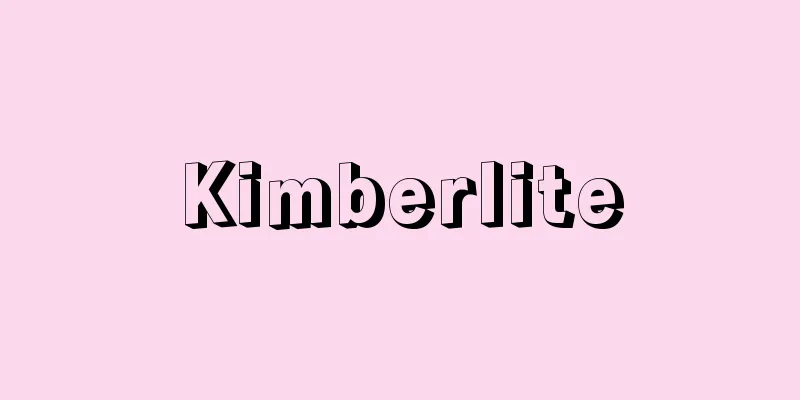Kimberlite

|
The name is derived from the diamond-bearing rock found in Kimberley, which is a volcanic tube 150 metres in diameter that penetrates Precambrian, Carboniferous or Triassic strata. It is funnel-shaped at the top and cylindrical at the bottom, and has been mined to a depth of 1200 metres. →Related topics: Peridotite | Diamond Source : Heibonsha Encyclopedia About MyPedia Information |
|
斑状構造の顕著な,蛇紋岩化あるいは炭酸塩化した雲母カンラン岩でパイプ状小岩体をなすもの。キンバリーでダイヤモンドの母岩となったものに命名されたのに由来。キンバリーでは先カンブリア時代,石炭紀または三畳紀の地層を貫く直径150mの火山筒をなし,上部は漏斗(ろうと)状,下部は円柱状で,深さ1200mまで採掘された。 →関連項目カンラン(橄欖)岩|ダイヤモンド 出典 株式会社平凡社百科事典マイペディアについて 情報 |
>>: Kinpara (golden belly) - black-headed munia
Recommend
Instep - Koukake
(Also called "kougake") A cloth worn ove...
Ikkeisai - Ikkeisai
…His name was Yoshitame. He called himself Toyoto...
Cecropia silkworm - Hyalophora cecropia
An insect of the Lepidoptera family, Saturniidae (...
Uncle's enemy - Ojigataki
...The "Teiyari Teki" is the role of a ...
Verdun (English spelling)
A town in the Meuse department in northeastern Fra...
Big feet - Oashi
〘noun〙① big feet. In particular, the soles of the ...
Pagurus dubius (English spelling)
…Hermit Crab [Masamichi Takeda]. . . *Some of the...
Demetrius I
187 - 150 King of Syria. Reigned 162-150 BC. Secon...
vanising lung
...Complications include pneumothorax, infection,...
Diptera
...A general term for insects that belong to the ...
A handful of sand
This is Ishikawa Takuboku's first collection ...
Ryoi Genbetsu - When is it okay?
Annotated book of songs from the Kojiki and Nihon ...
Anergy
Originally used in contrast to allergy or hyperse...
Station
…It is also called “ekiwa.” It is what is commonl...
Tapirus terrestris (English spelling)
...A general term for four species of mammals bel...
![Rokusei [town] - Rokusei](/upload/images/67cd3a71ed23a.webp)








